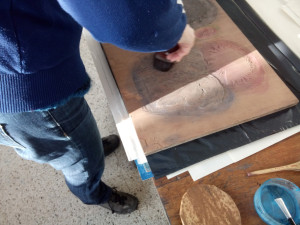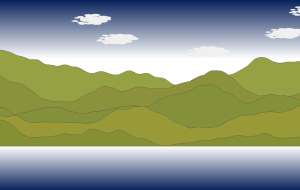The past month I’ve been working on my landscape animation. By chance I discovered a great book by Daniel Shiffman called The nature of code. The book explains how to convert natural forces into code. I’m working through the book picking the forces and algorithms that suit my needs. So far the noise function in Processing has proven very useful. It allows for creating more natural variation (as opposed to the random function.) I use it in creating the landscape horizons and some forms of animation.

In a previous post I described how I calculated the colours used in a woodblock print from Hokusai. Since then I have discovered the colorlib library. A super fast library for creating palettes and gradients from existing pictures. You can sort colours and manipulate the palette using various methods. This means I can change my colours dynamically depending on user input.

Apart from working through the book and creating basic animations I’m working on the look and feel of the landscape.
As I explained earlier this is based on the work of Hokusai. To my delight I discovered that a colleague is one of the few Dutch experts on Japanese woodblock printing, having received training in Japan. On top of that Jacomijn den Engelsen is also an artist whom I’ve admired for years. I met with her yesterday in her studio to learn more about this fascinating technique.

The characteristic look of the pieces comes from the use of water based paint on wet rice paper. For every colour a separate woodblock is used. The typical black outlines are also printed from a separate block.

The prints have a very flat, 2D feel. That is what I like, it is a kind of primitive picture of a landscape. The view people will be seeing won’t be a 3D simulation of nature but an artistic representation, a work of art with healing properties.
I’m not a painter or draughtsman so I was very happy with the tips Jacomijn gave me on how to make the landscape more convincing while still keeping the ‘Japanese flatness’.